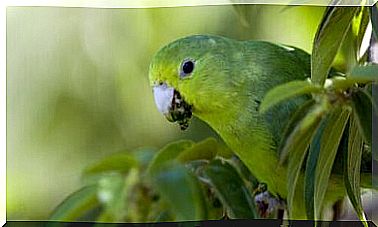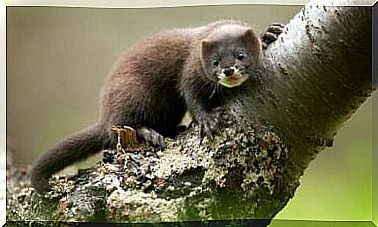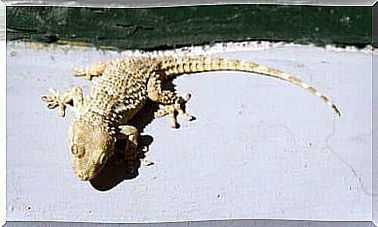6 Animals Without Bones

When asked to think of an animal, most unskilled people imagine organisms with a skeleton, which belong to a very specific category: vertebrates. These living beings are generally larger, easier to see and prevalent in various human cultures, and even among specialized circles they receive much more attention. Despite this, this group – birds, mammals, reptiles, fish and amphibians – make up only a small part of animal life. Those commonly called “bugs”, in fact, are infinitely more numerous and different, because they lack bones. Today we are talking about them, about invertebrates, and in particular about 6 types of animals without bones.
These specimens have conquered every corner of the planet, belong to very different groups and still hide countless secrets for humans.
Characteristics of boneless animals
As already mentioned, invertebrates make up the vast majority of animal life. Of the more than 30 phyla – the largest groups into which living things are divided – of existing animals, vertebrates represent only one.
All these phyla were formed following very ancient evolutionary divisions between faunal groups. Therefore, it is easy to understand that these groups are very independent of each other, have evolved along very different paths and exhibit radically different anatomical and ecological characteristics.
Invertebrates are usually small. Due to the limitations of their circulatory and respiratory systems, the structure of their bodies, competition with vertebrates and other factors, most of these boneless animals do not reach large sizes. Some are even microscopic.
However, this has not always been the case. In the past, thanks to different environmental conditions, some invertebrates reached larger sizes than today. They too, like vertebrates, are extremely ancient, as the first specimens were part of this group. They tend to have a fairly short lifespan and, of course, have no bones made of calcium, like ours.
1. 6 Boneless Animals: Echinoderms (Phylum Echinodermata)
This group includes sea urchins and sea cucumbers, starfish and crinoids. They are the most unknown to the general public and among the most fascinating.
In total there are about 20,550 described species of echinoderms, and 7,550 species that still live today. Generally, they have radial symmetry, as their body is divided into 5 equal parts around a central axis, where the mouth is located. Their body can also be divided into a number of parts that is a multiple of 5, and is covered with a characteristic calcareous exoskeleton, composed of small separate plates, hence its scientific name. All echinoderms inhabit salt waters.
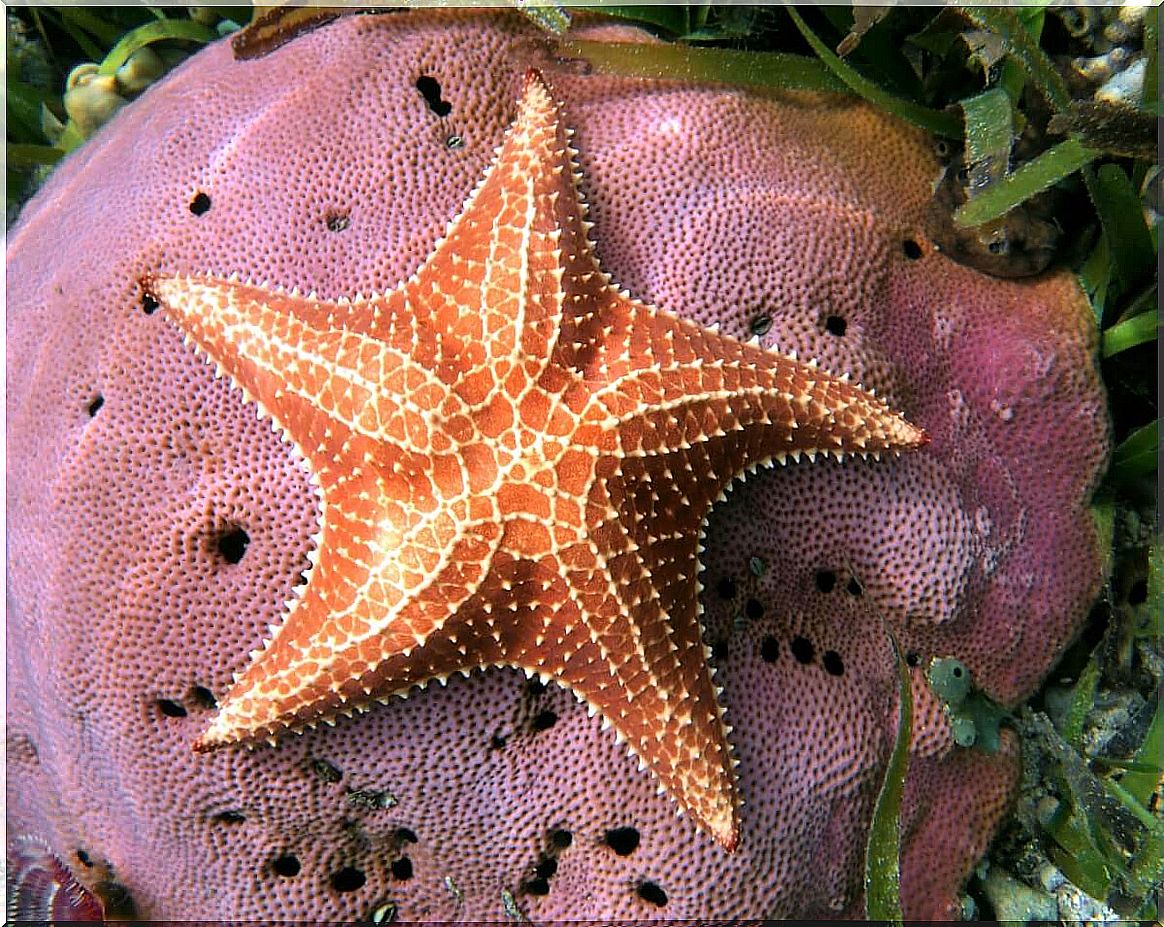
2. Porifer (Phylum Porifera)
Porifera are better known as sea sponges. Contrary to what one might think, these beings are animals. They are in fact the oldest living beings that exist and constitute the twin group of all the rest of the planet’s fauna.
The 8659 species present today are marine, although they may occupy diverse ecosystems within the oceans. They are mostly sessile (immobile) and lack authentic fabrics. Their food is based on the filtration of suspended particles: to feed themselves they generate water currents in their bodies thanks to flagellate cells.

3. Arthropods (Phylum Arthropoda)
Among the 6 boneless animals, we also find arthropods, which are by far the most successful, numerous and diverse animal phyla. They consist of 1 257 040 living species and another 45 769 extinct. The large groups within arthropods are hexapods (which includes insects), myriapods (millipedes), chelicerates (spiders, scorpions, etc.) and crustaceans.
All of these boneless animals have bilateral symmetry. Their body is covered with a hard, chitinous exoskeleton, which protects them from the environment. Furthermore, it is divided into a series of segments, each with a pair of articulated appendages.
These segments and appendages can be fused, modified, and specialized in any imaginable way, giving arthropods tremendous adaptability. Thanks to them, these invertebrates have successfully colonized every corner of the planet.

4. Molluscs (Phylum Mollusca)
These boneless animals are the second most diverse group, with approximately 84,977 species currently. They are soft-bodied and vulnerable organisms, mostly aquatic, which have adopted very different strategies.
On the one hand we have the bivalves, not very mobile, filtering and protected by very robust shells or valves. On the other hand, the gastropods, which are more mobile and feed on plants or animals through the radula. Many carry a spiral-shaped shell within which they hide.
Finally, there are the cephalopods, which have opted for extreme mobility in the water, carnivorous and endowed with incredible intelligence. These animals have multiple and mobile arms or tentacles, through which they reproduce, hunt and interact with the environment. Furthermore, these invertebrates are masters of color change.
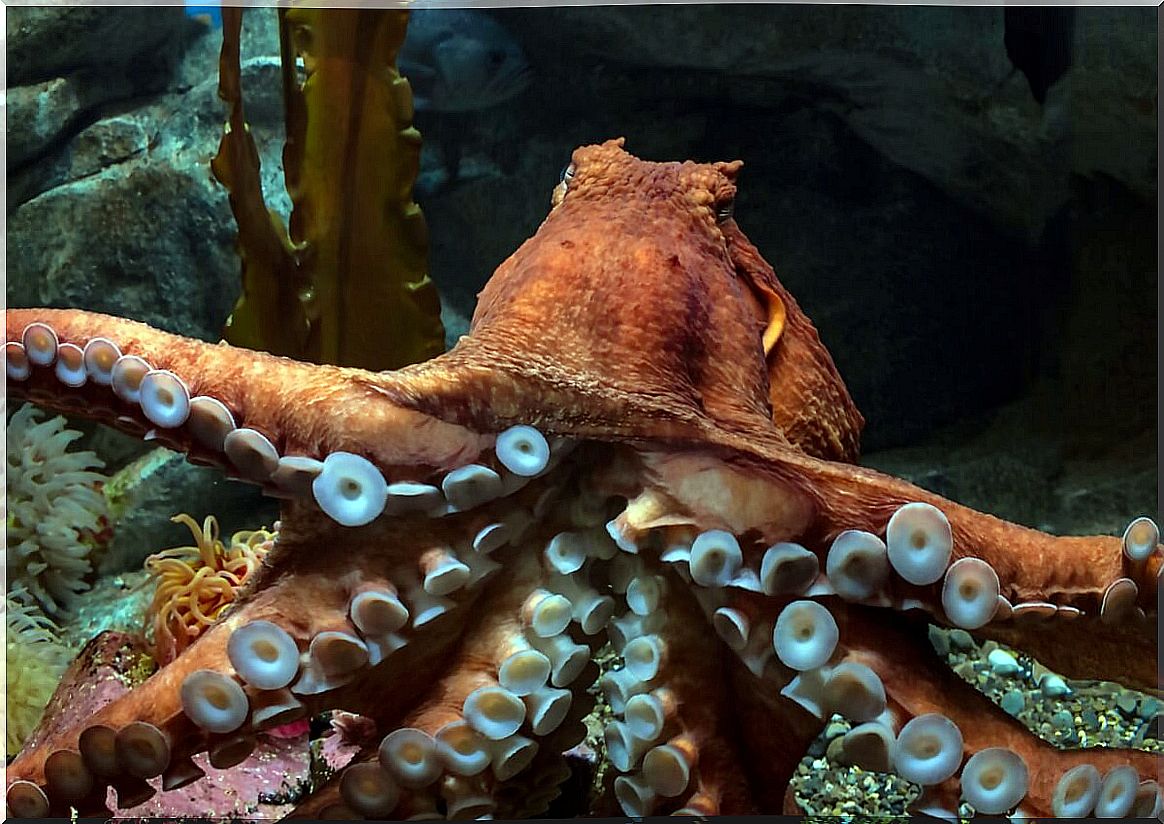
5. Cnidarians (Phylum Cnidaria)
Again, this is a purely aquatic creature. It includes 10,203 very different species. Some cnidarians have a mobile life and are called jellyfish. Others are polyps, which live permanently attached to the marine substrate. Some species may alternate one option or the other depending on their life stage.
On the other hand, there are cnidarians that live individually, while others form massive colonies of coordinated organisms. Some colonies swim freely, while others are sessile. In addition, there are cnidarians that are covered with a rocky and inorganic protection: corals.

6. Annelids (phylum annelids)
Annelids are often referred to as “worms,” although this term is broad and includes other organisms as well. Most of its 17,388 species are marine.
The majority group of annelids are polychaetes. Some of them are mobile and have thickened appendages in each segment. Others live inside rigid tubes and expel filaments into the environment to catch food. Earthworms or oligochetes are also annelids. The same goes for the famous leeches.

We have analyzed in detail 6 animals without bones. Although small and often overlooked, invertebrates are invaluable. In fact, they perform a myriad of functions useful for supporting ecosystems around the world. Without them, nothing would survive on this planet.

